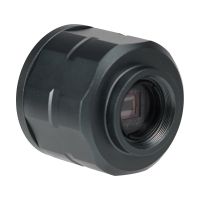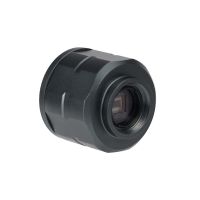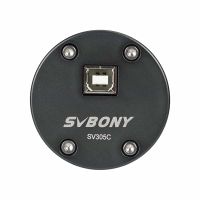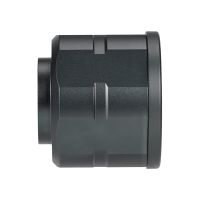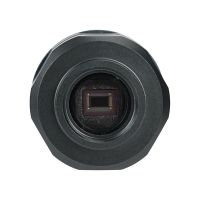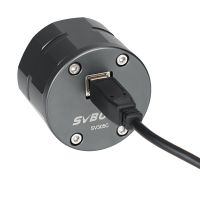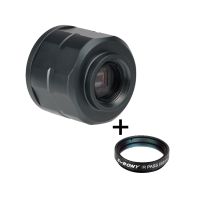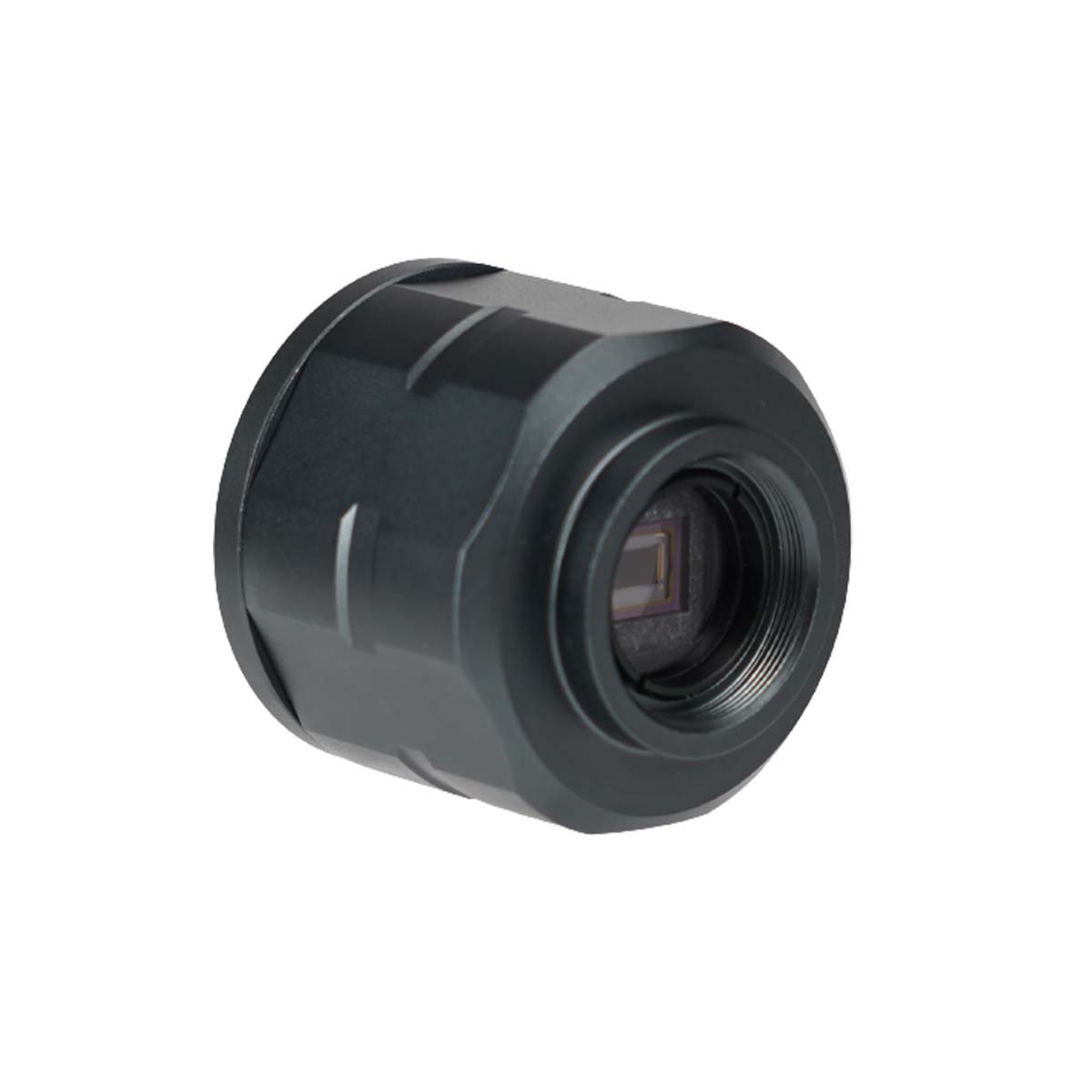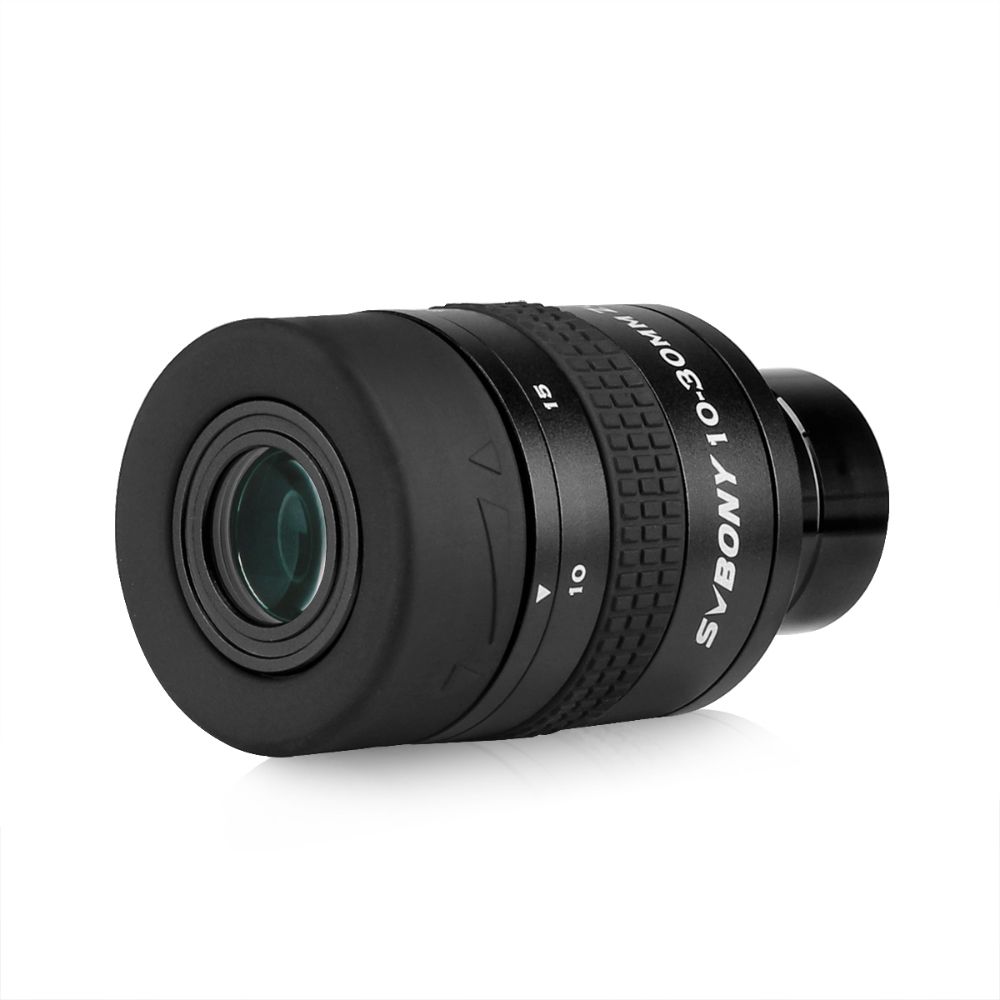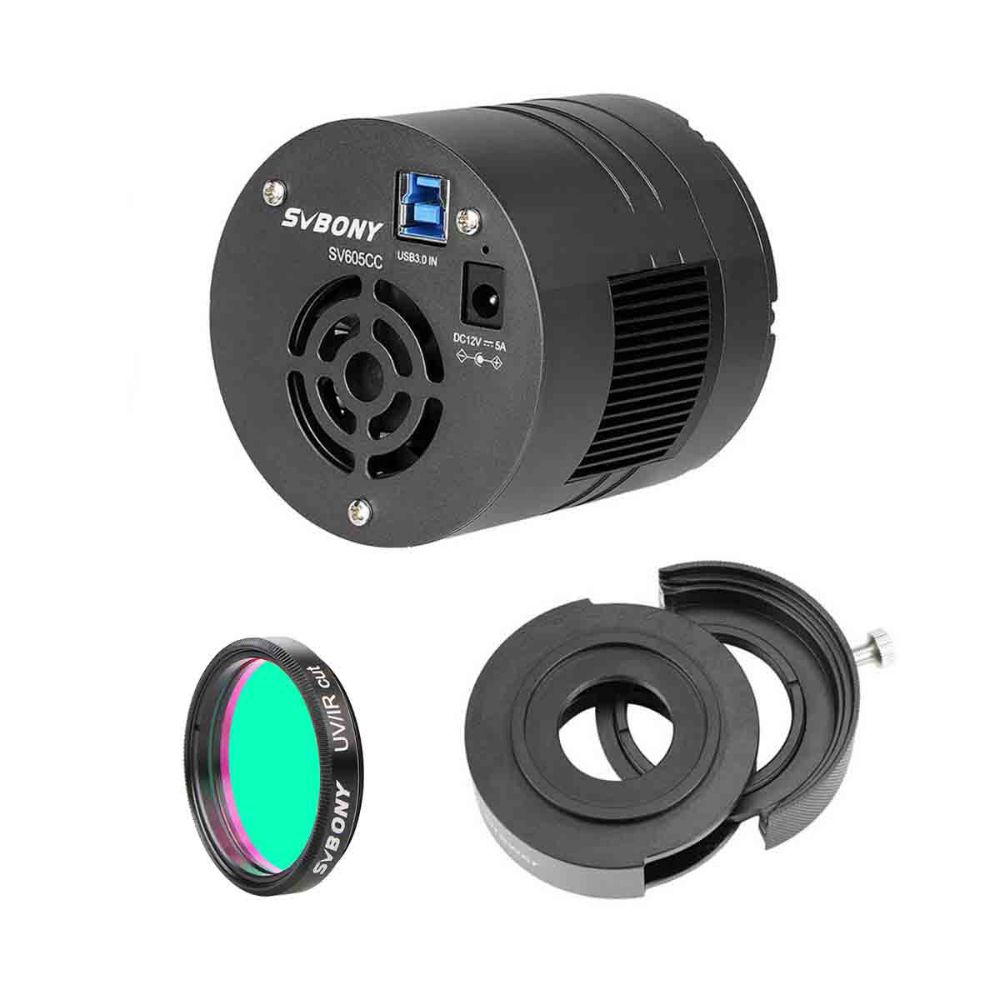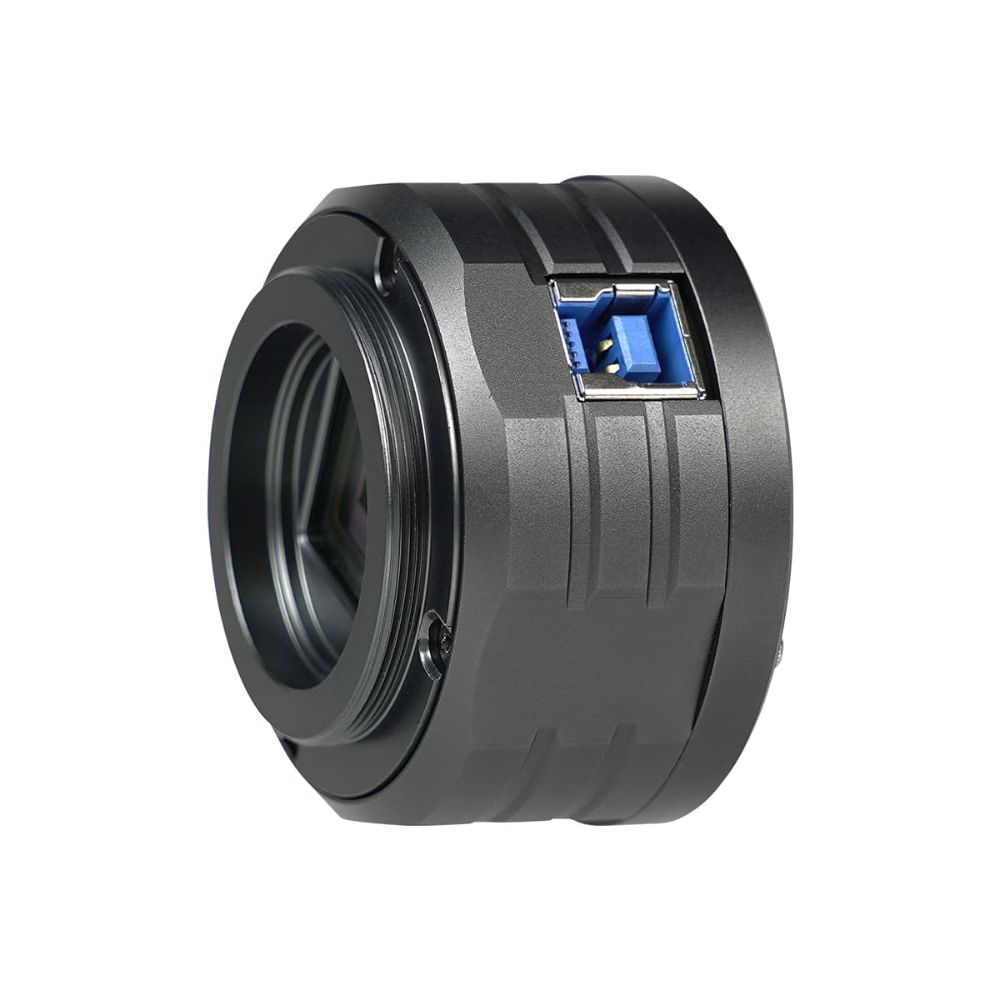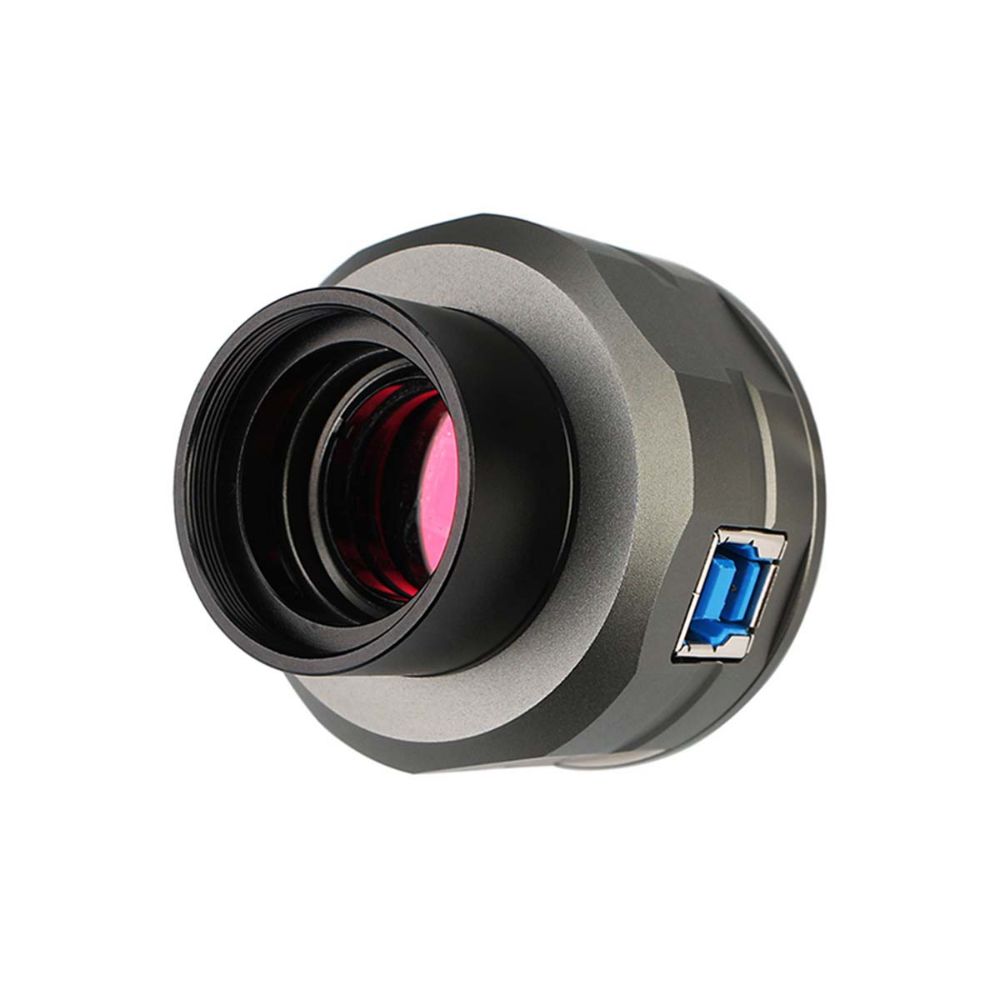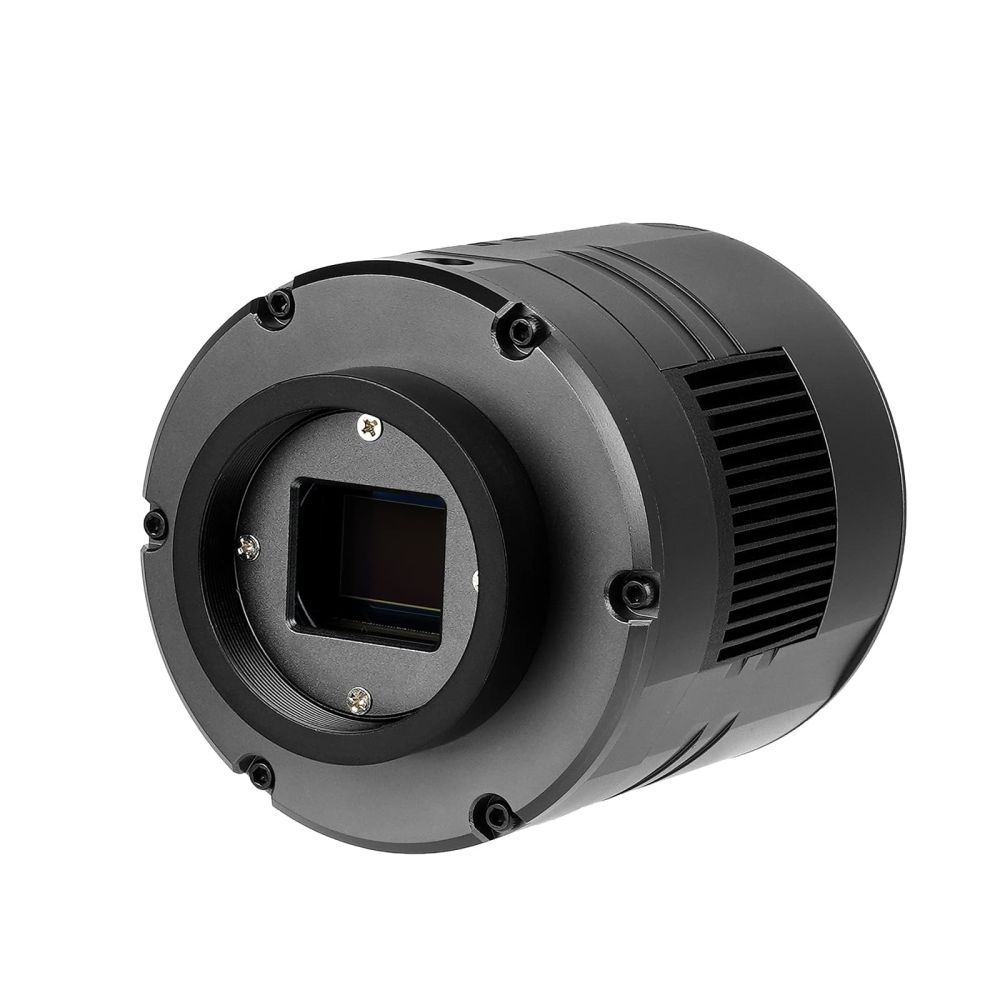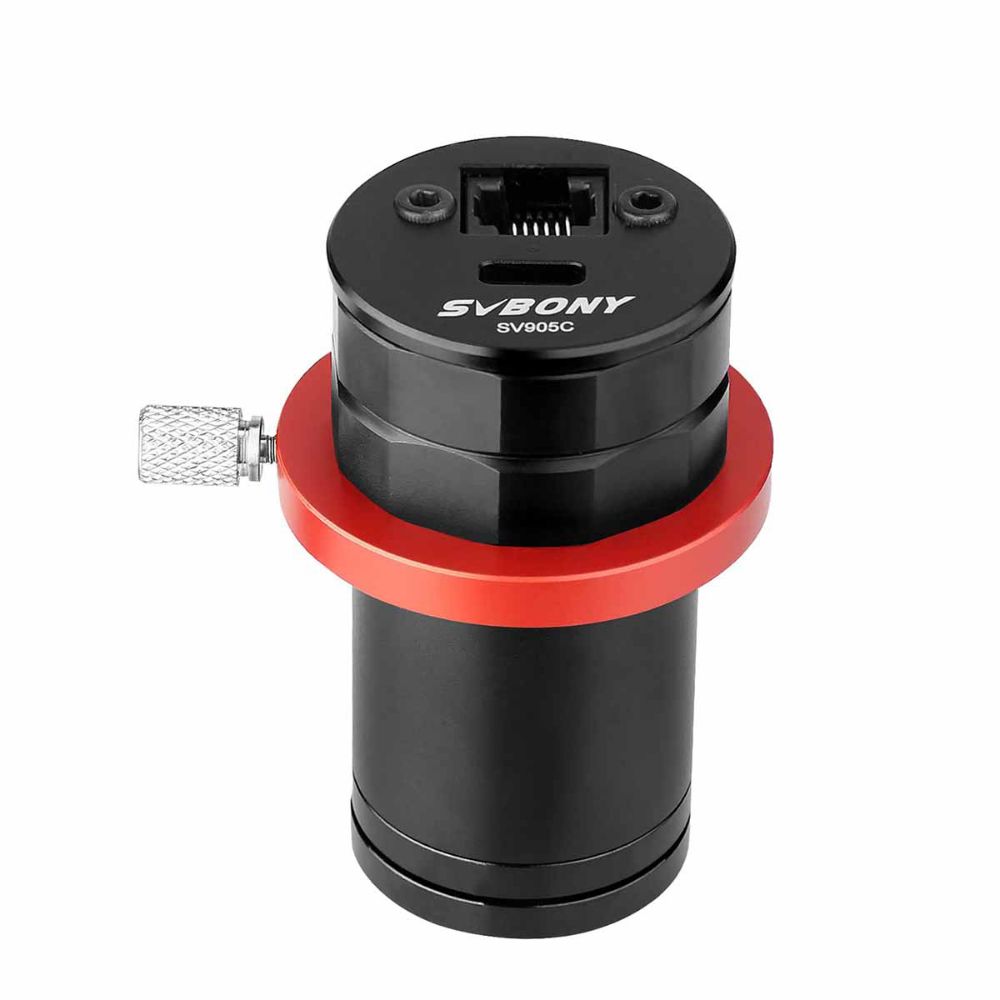- SV305C telescope camera adopts the latest IMX662 1/2.8” back-illuminated sensor. The camera has ultra-high sensitivity and ultra-low readout noise. It has better performance in planetary photography and lunar surface photography, and is very suitable for EAA.
- One-key quick setting: We have set planetary high-speed mode and deep space long exposure mode in the sharpcap software, users can choose according to their actual shooting needs, and realize one-key quick setting. After setting, they can adjust the best parameters suitable for them. It can be saved for convenient one-key setting next time. The unique one-button operation mode makes planet shooting easier.
- UV/IR CUT protective glass with detachable design: If users want to shoot infrared or ultraviolet bands, they can remove the protective glass at the front of the camera by themselves, connect it with a 1.25-inch extension tube, and connect an external IR685, IR850 or UV Venus filter to achieve different shooting experience.
- Using HCG noise reduction technology, when the gain is increased, the HCG mode will be automatically turned on, which can greatly reduce the readout noise, and at the same time retain the high dynamic range of low gain. When the gain value of SV305C telescope camera is 190, HCG will be turned on automatically.
To learn more about the user comments of SV305C, you can refer to this blog: https://www.svbony.com/blog/svbony-sv305c-camera-review/
Summer Sale! Exclusive discounts, buy now!
SV305C Color Planetary Camera IMX662 for Astrophotography and EAA
SV305C telescope camera adopts the latest IMX662 1/2.8” back-illuminated sensor. The camera has ultra-high sensitivity and ultra-low readout noise. It has better performance in planetary photography and lunar surface photography, and is very suitable for EAA.
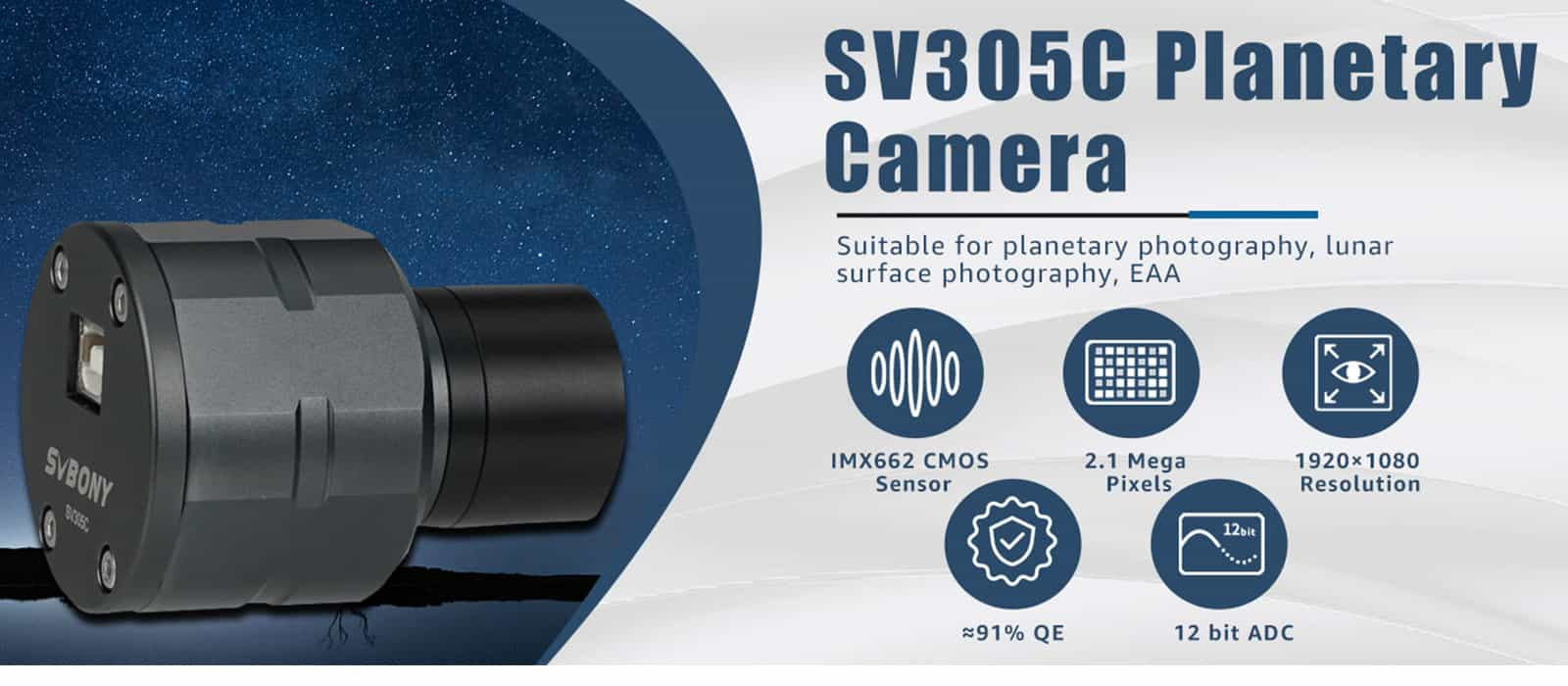
IMX662 CMOS sensor
The SV305C planetary camera uses the IMX662 sensor. Compared with the previous generation sensor IMX462, the sensor has three times the full well charge, which can effectively avoid overexposure and ensure long exposure. The IMX662 sensor has the characteristics of low readout noise, no glow, and greatly improved NIR, especially in the red spectral band, which has a higher sensitivity than IMX462.
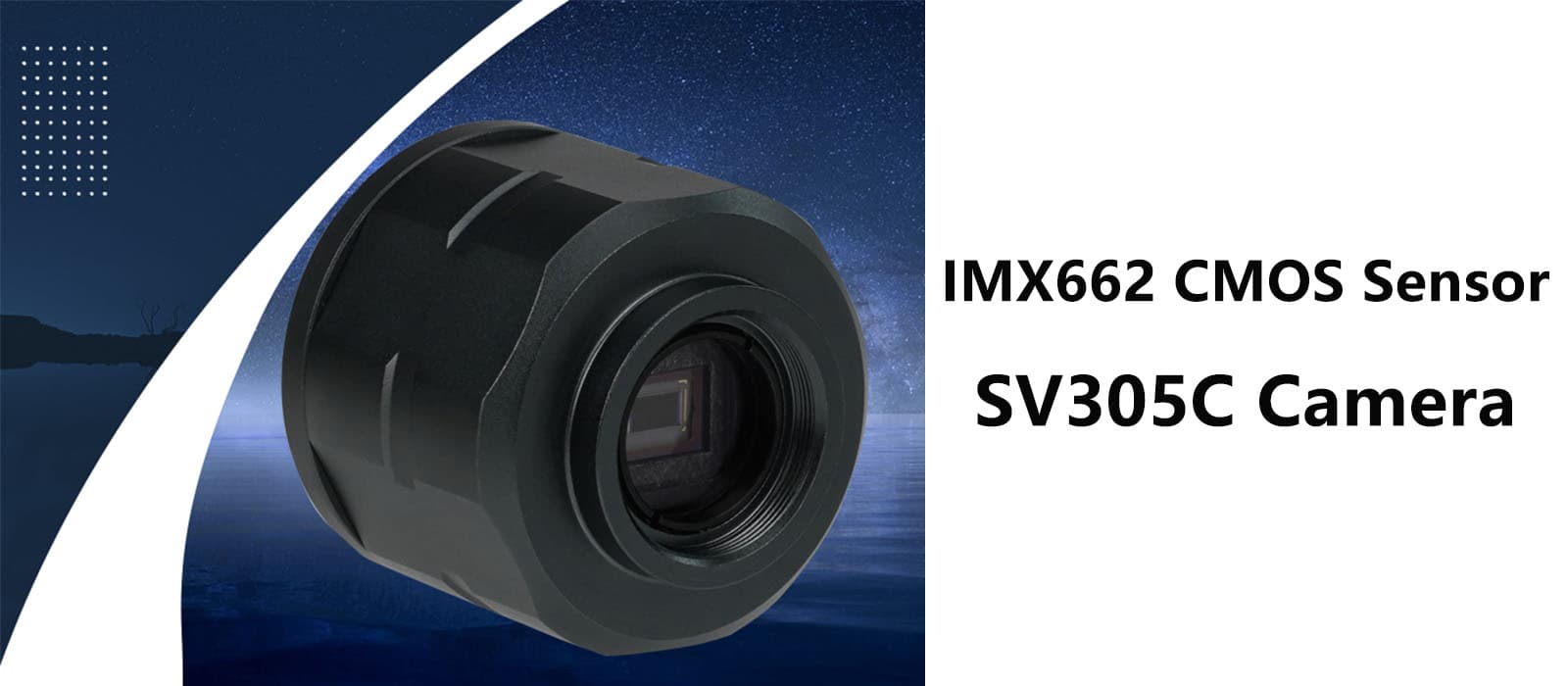
QE
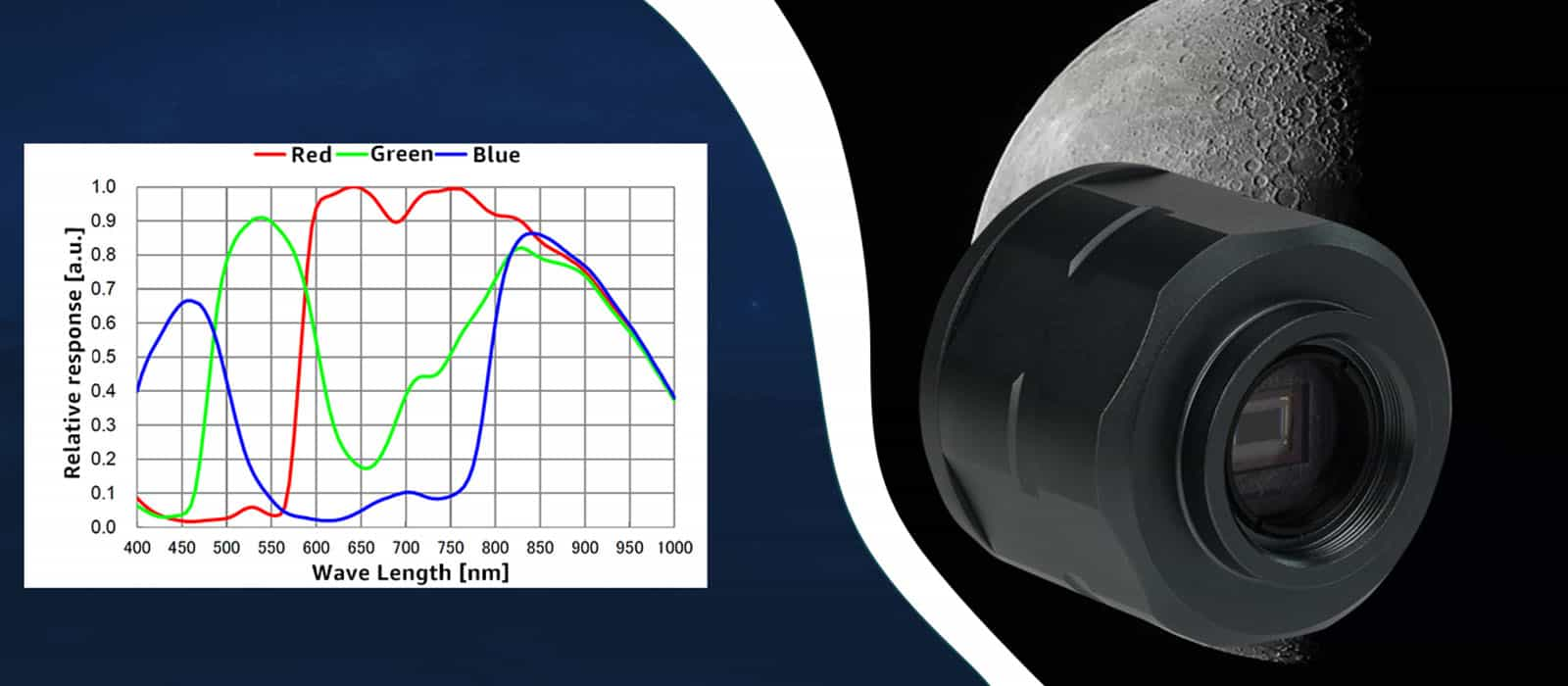
Dynamic Range & Full Well
Using HCG noise reduction technology, when the gain is increased, the HCG mode will be automatically turned on, which can greatly reduce the readout noise, and at the same time retain the high dynamic range of low gain. When the gain value of SV305C telescope camera is 190, HCG will be turned on automatically.
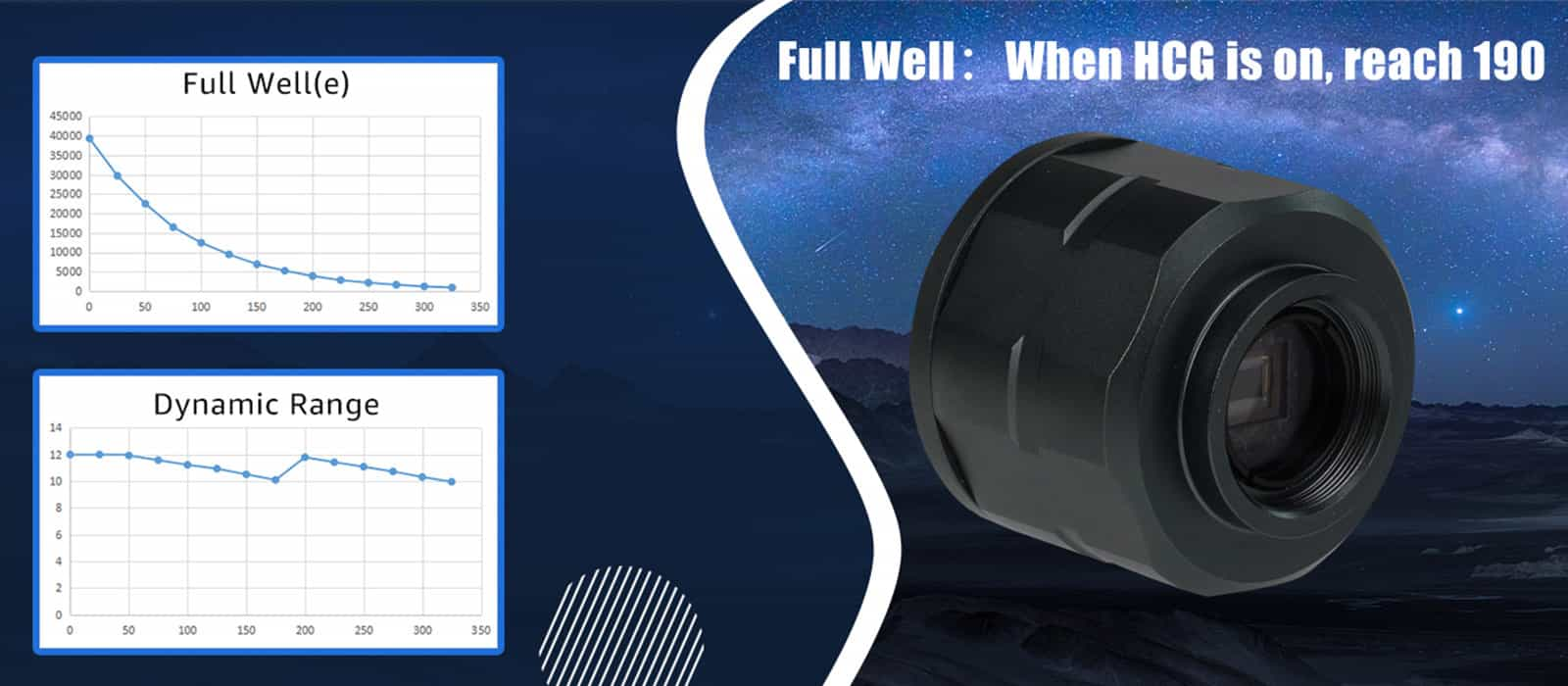
Read Noise & Gain
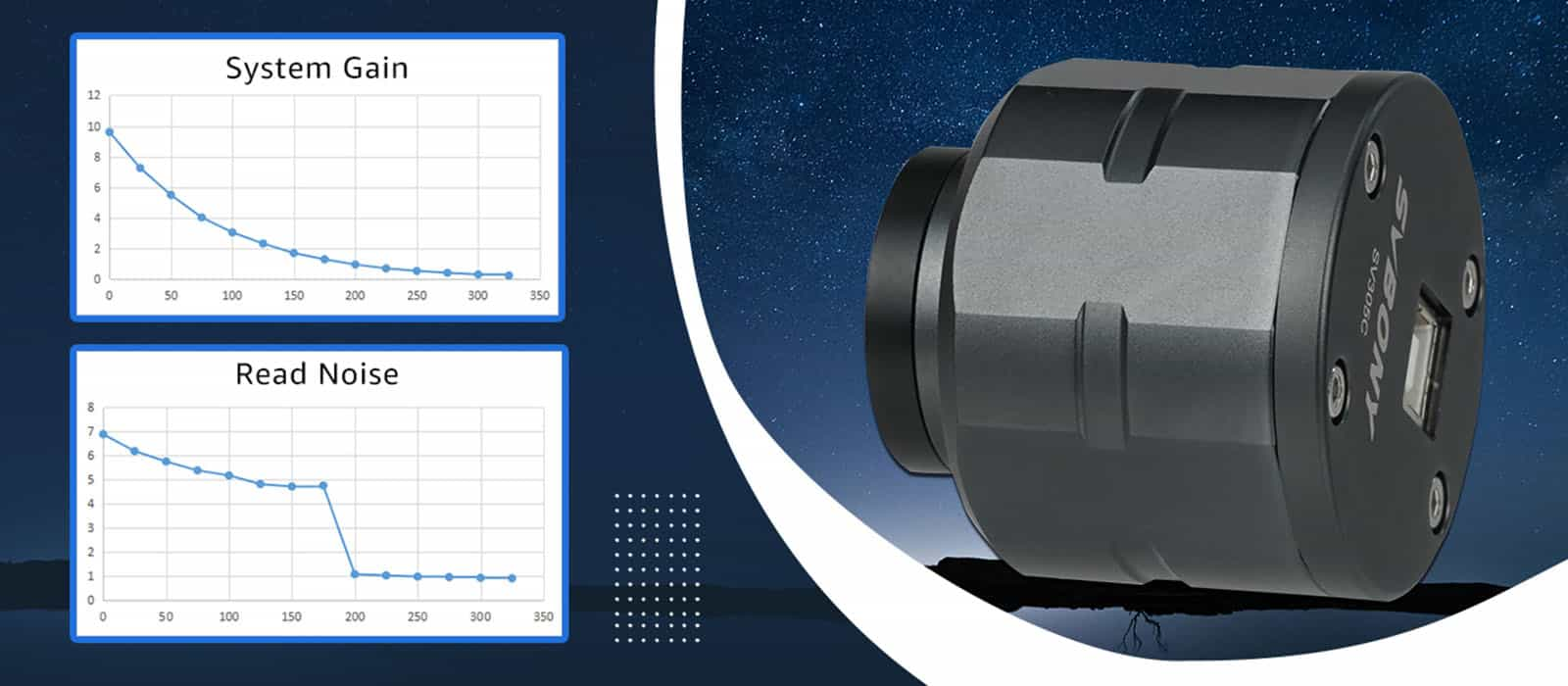
Dimensions Display
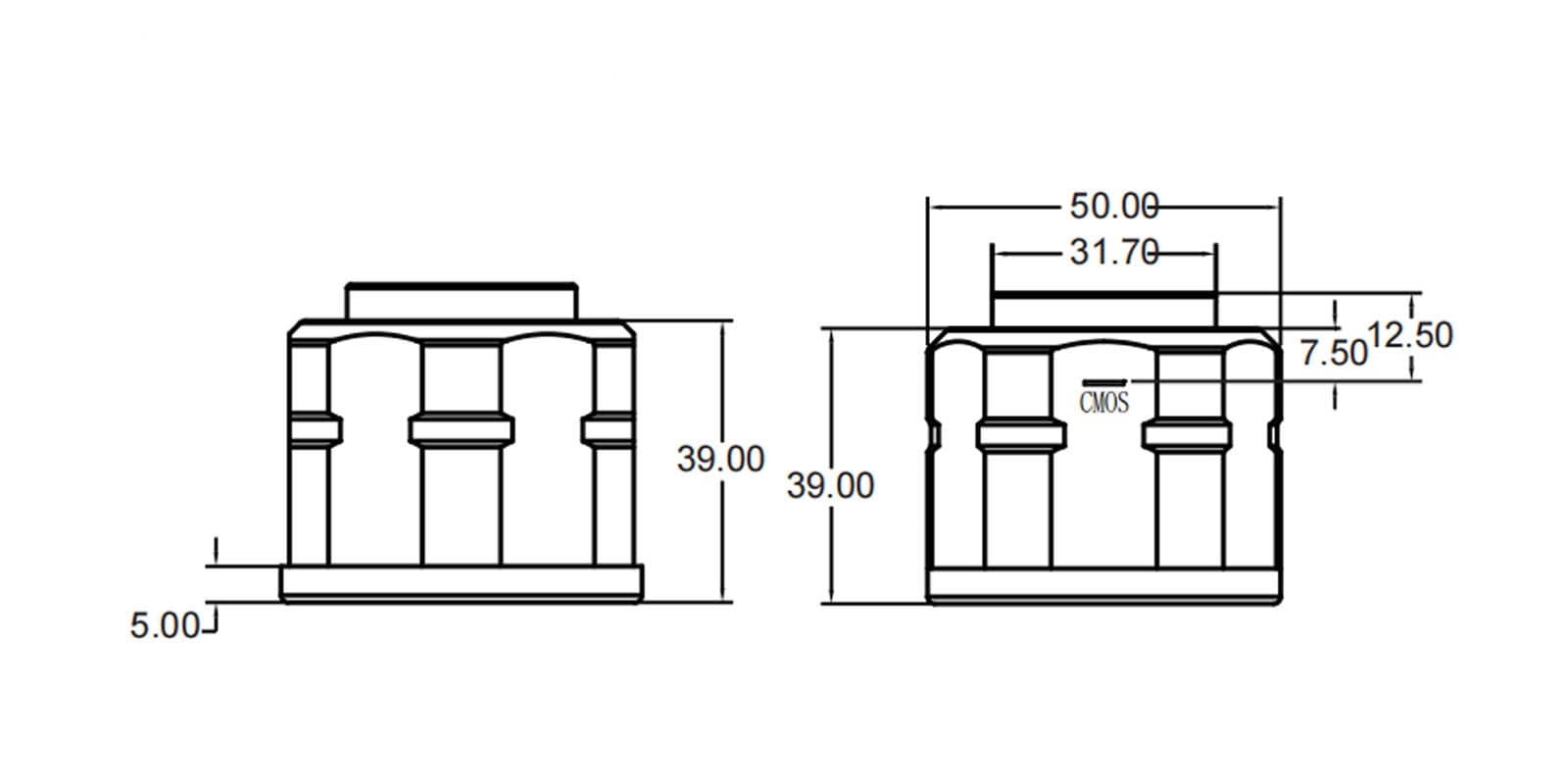
ROI Function & BIN
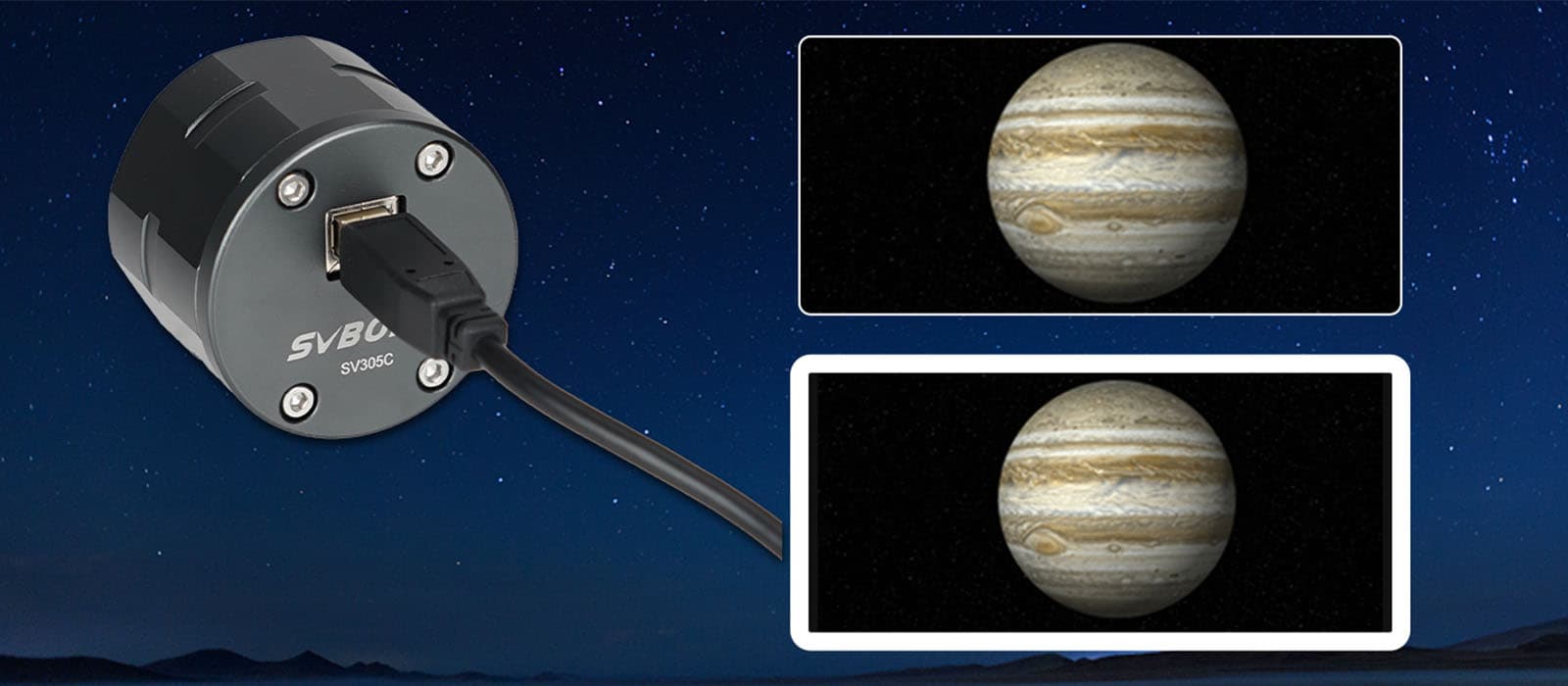
1.25 Inch CS Interface
SV305C planetary camera can use a 1.25-inch universal astronomical interface, the front of the camera is a CS interface, and it is also equipped with a CS-C adapter ring, which can be used with C-mount lenses and CS-mount lenses for shooting.
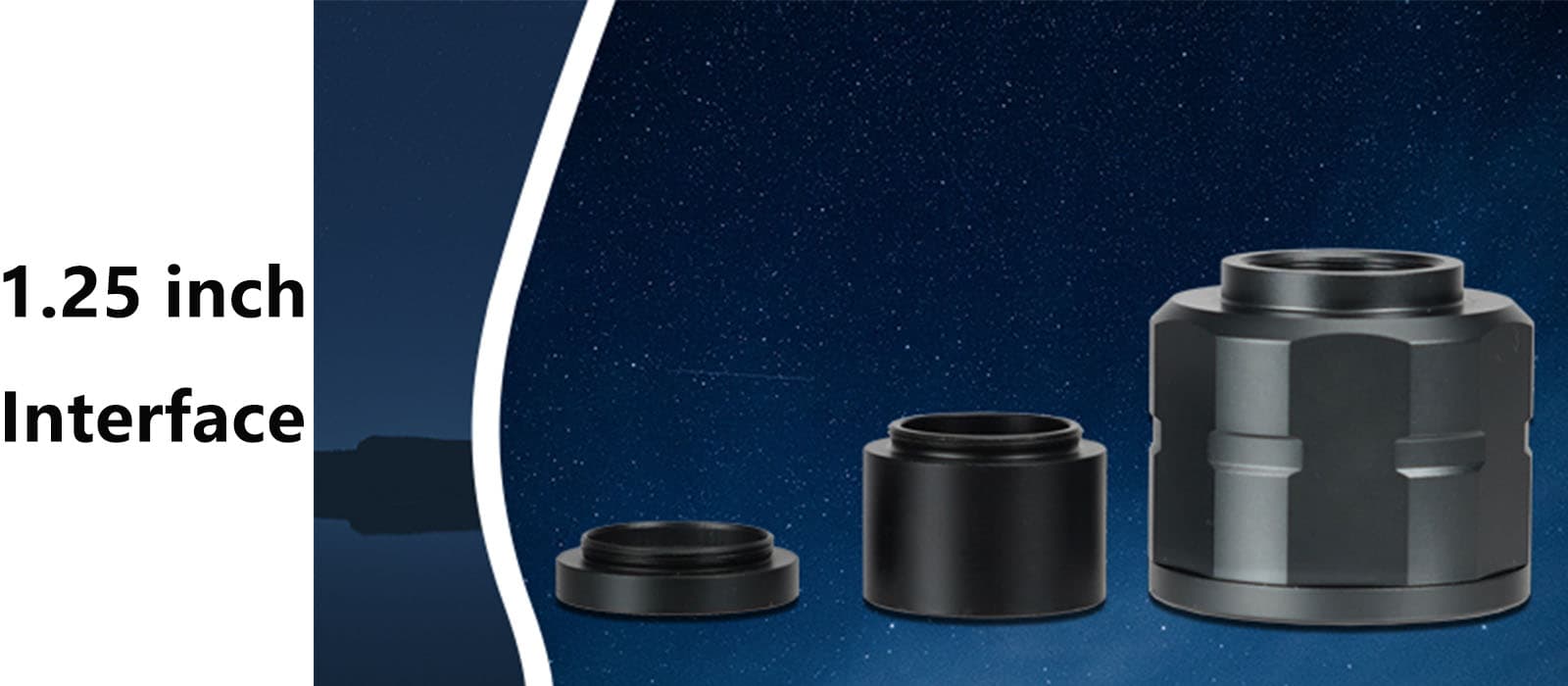
USB 2.0 Interface
SV305C color palnetary camera is designed with USB2.0 interface, which can meet the basic needs of users, suitable for entry-level planetary photography.
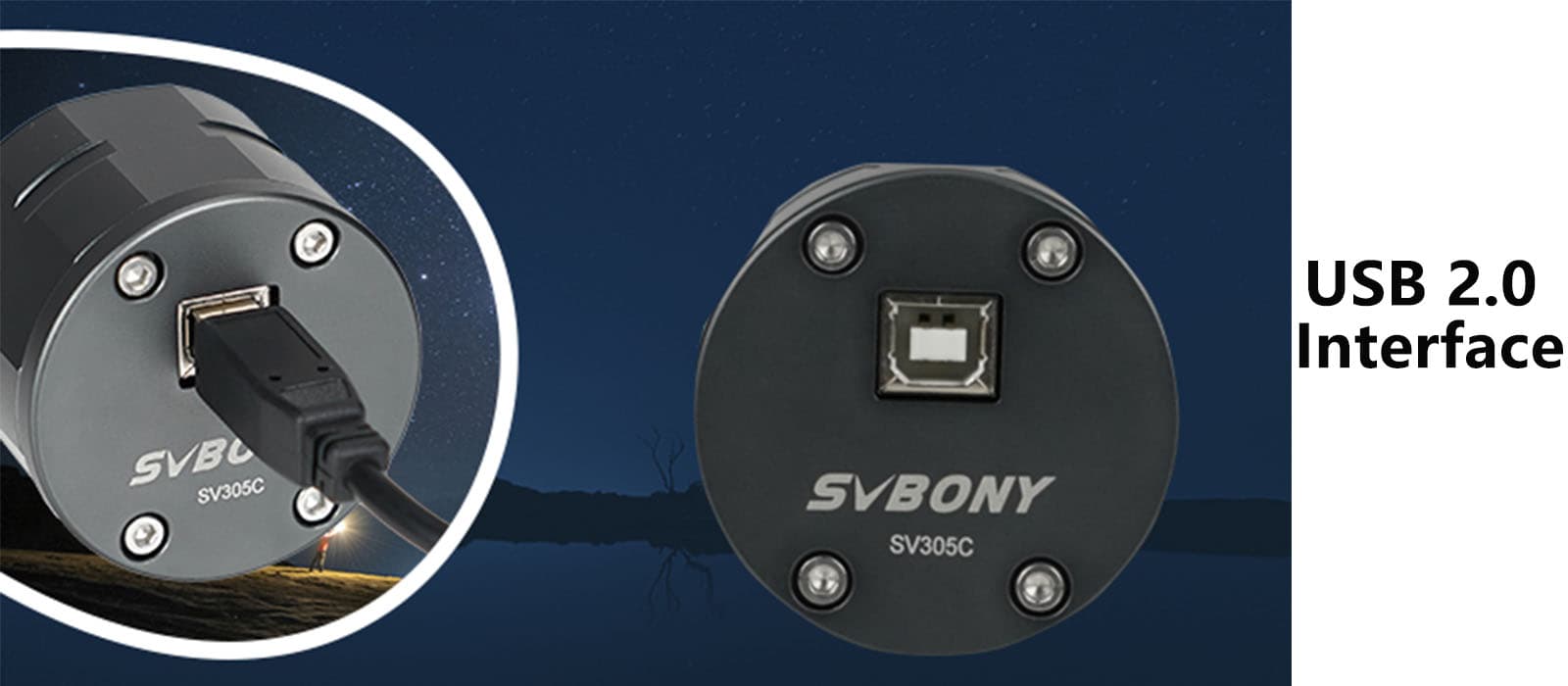
128MB DDRII Buffer
SV305C planetary camera has a built-in 128MB DDRIII image buffer. The benefit of the image buffer is that the memory will cache the image and transfer it to the computer when the USB interface is not busy or being interrupted, so that the frame won’t be lost or corrupted.
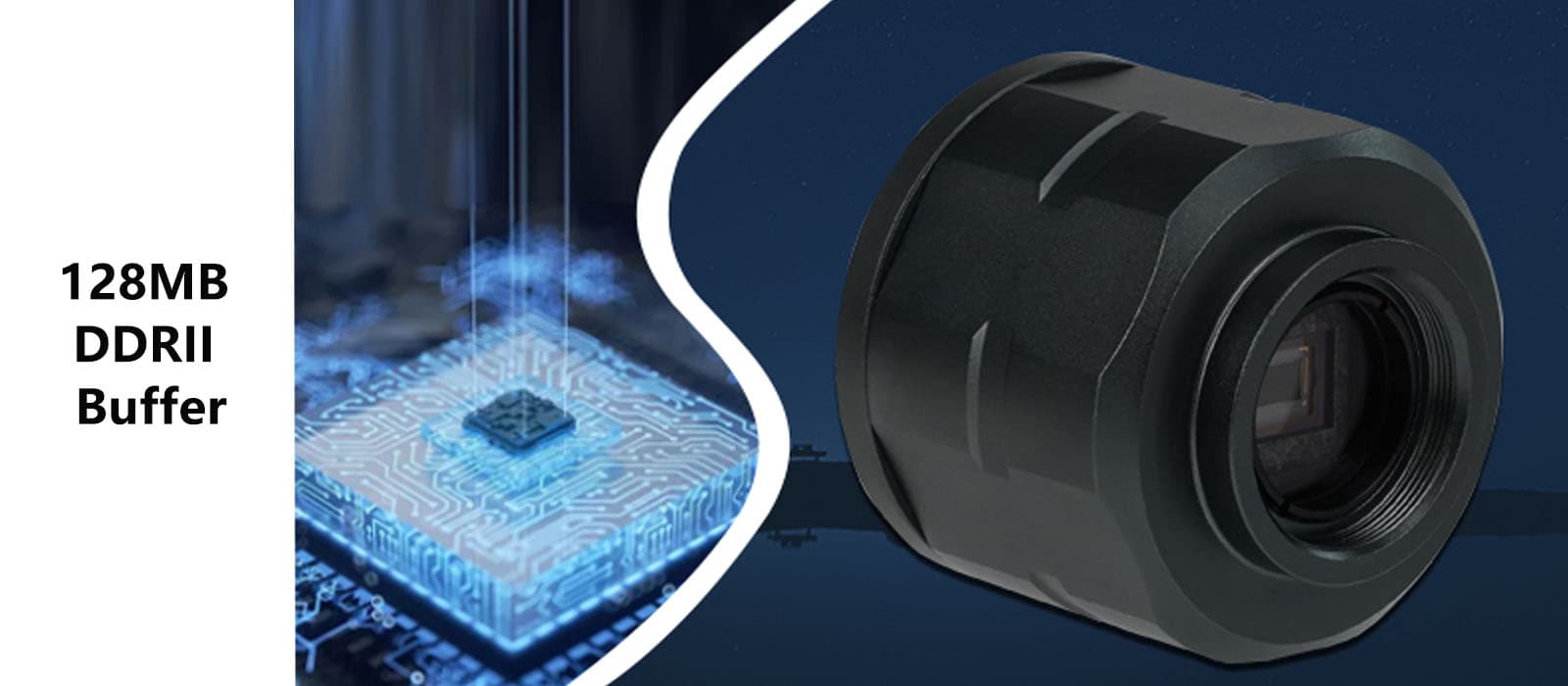
UV/IR CUT Protective Glass With Detachable Design
The built-in protective glass of the fuselage is UV/IR CUT, which can reach a high transmittance of more than 96% in the visible light range of 400-700nm. When shooting celestial images in the visible light range, a well-balanced color can be obtained.
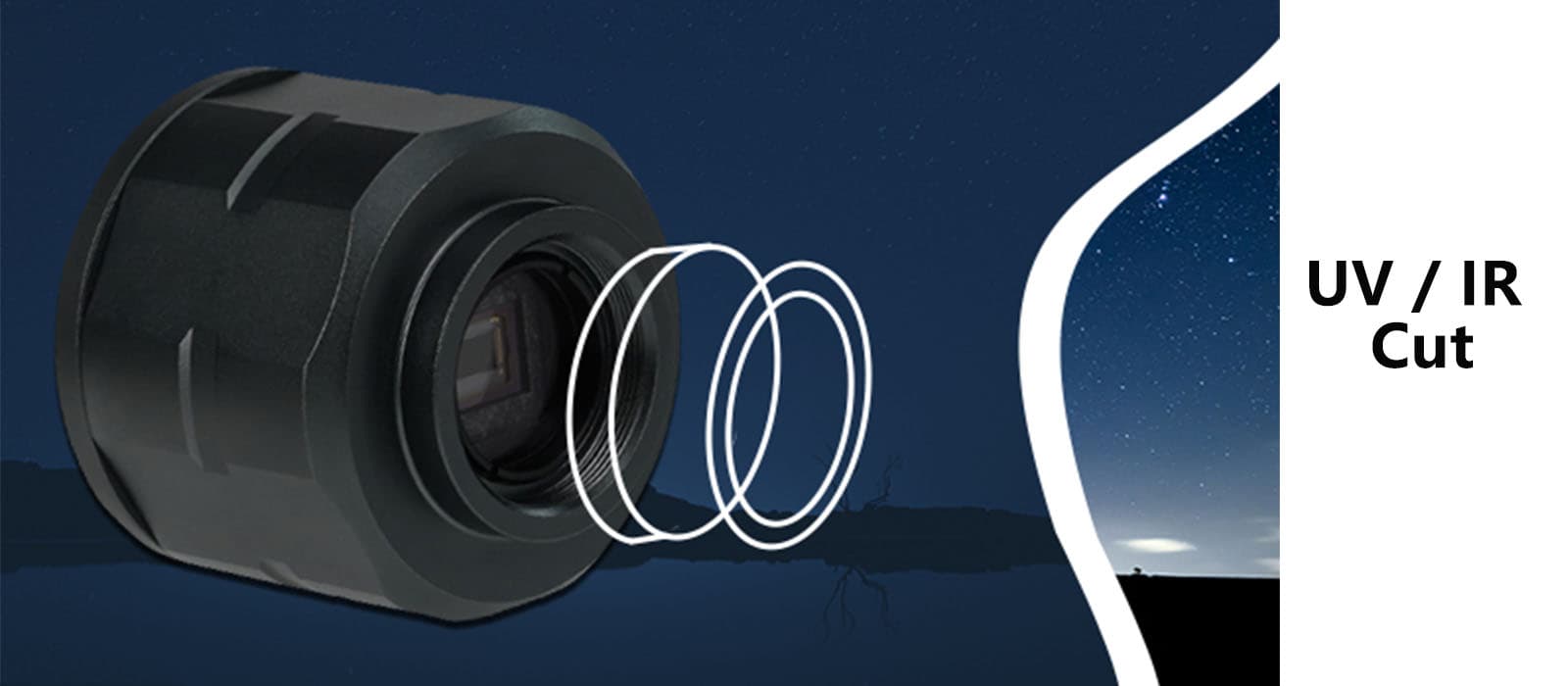
Detachable UV IR Cut Glass
If users want to shoot infrared or ultraviolet bands, they can remove the protective glass at the front of the camera by themselves, connect it with a 1.25-inch extension tube, and connect an external IR685, IR850 or UV Venus filter to achieve different shooting experience.When the protective window glass is removed, the original function of preventing infrared and ultraviolet rays from passing through is released. At this time, you can connect SV305C camera with the SV183 IR Pass Filter, which is suitable for nature photography in the Near-IR; revealing stunning differences in plants, sky and clouds.

For Astrophotography & EAA
One-key quick setting: We have set planetary high-speed mode and deep space long exposure mode in the sharpcap software, users can choose according to their actual shooting needs, and realize one-key quick setting. After setting, they can adjust the best parameters suitable for them. It can be saved for convenient one-key setting next time. The unique one-button operation mode makes planet shooting easier.
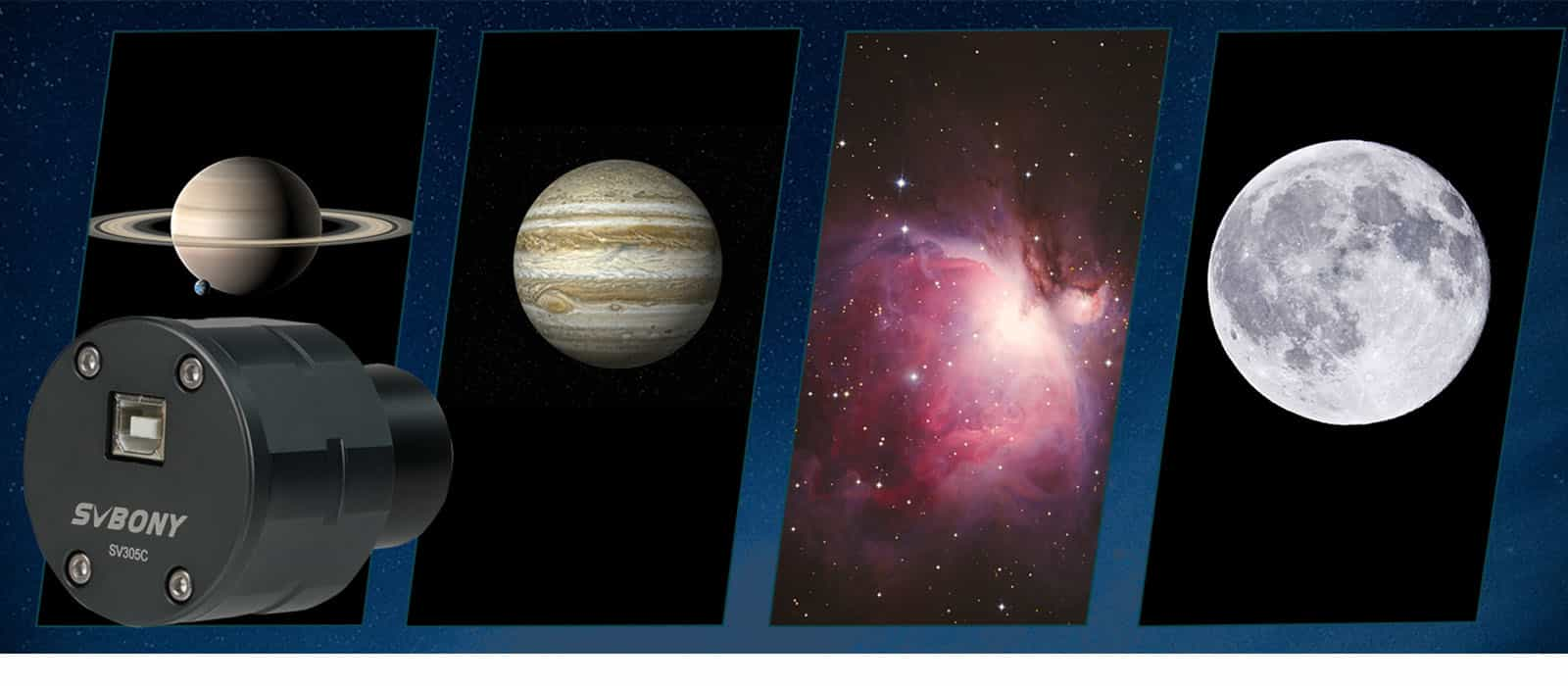
Specifications
| Model | SV305C |
| Sensor Model | SONY IMX662 |
| Total Pixels | 2.1 Mega Pixels |
| Diagonal | 6.44mm |
| Max Resolution | 1920×1080 |
| Pixel Size | 2.9μm X 2.9μm |
| Chip Size | 5.6mm×3.2mm |
| Frame Rate | 24FPS |
| Shutter | Rolling shutter |
| Exposure Range | 32μs-2000s |
| Readout Noise | 6.5e~0.7e |
| QE Peak | ≈91% |
| Full Well | 38ke |
| ADC | 12 bit |
| ROI | YES |
| BIN | 1X1 2X2 |
| Digital Noise Reduction | HCG |
| Compatible System | Windows , Linux OS , Raspberry Pi , Mac os, Chrome os |
| Built-in buffer | 128M |
| Data Port | USB2.0 |
| Adapter | 1.25″/CS/C |
| Protective Window | UV/IR CUT |
| Back Focal Length | 7.5mm/12.5mm |
-
Features
- 1/2.8'' COMS Sensor
2. 128MB DDRII Buffer
3. Support Any Area ROI and BIN 1*1 or BIN 2*2
4. HCG Digital Noise Reduction Technology
5. UV/IR CUT
-
Note
1.Computer configuration requirements:
1) The configuration of desktop computer is not less than Intel 4 generation i5, and the memory is not less than 4G.
2) Laptop configuration is not less than Intel 6 generation i5, memory is not less than 8g.
2. The SV305C camera is best used with a refractor or reflector telescope mounted on an equatorial mount that can accurately track the motion of the sky. It is not intended for taking images through the eyepiece of a telescope. You may also require additional accessories and filters to get the best results. If you want to use the SV305C camera capture images through telescope eyepiece. You need buy an eyepiece projection adapter.
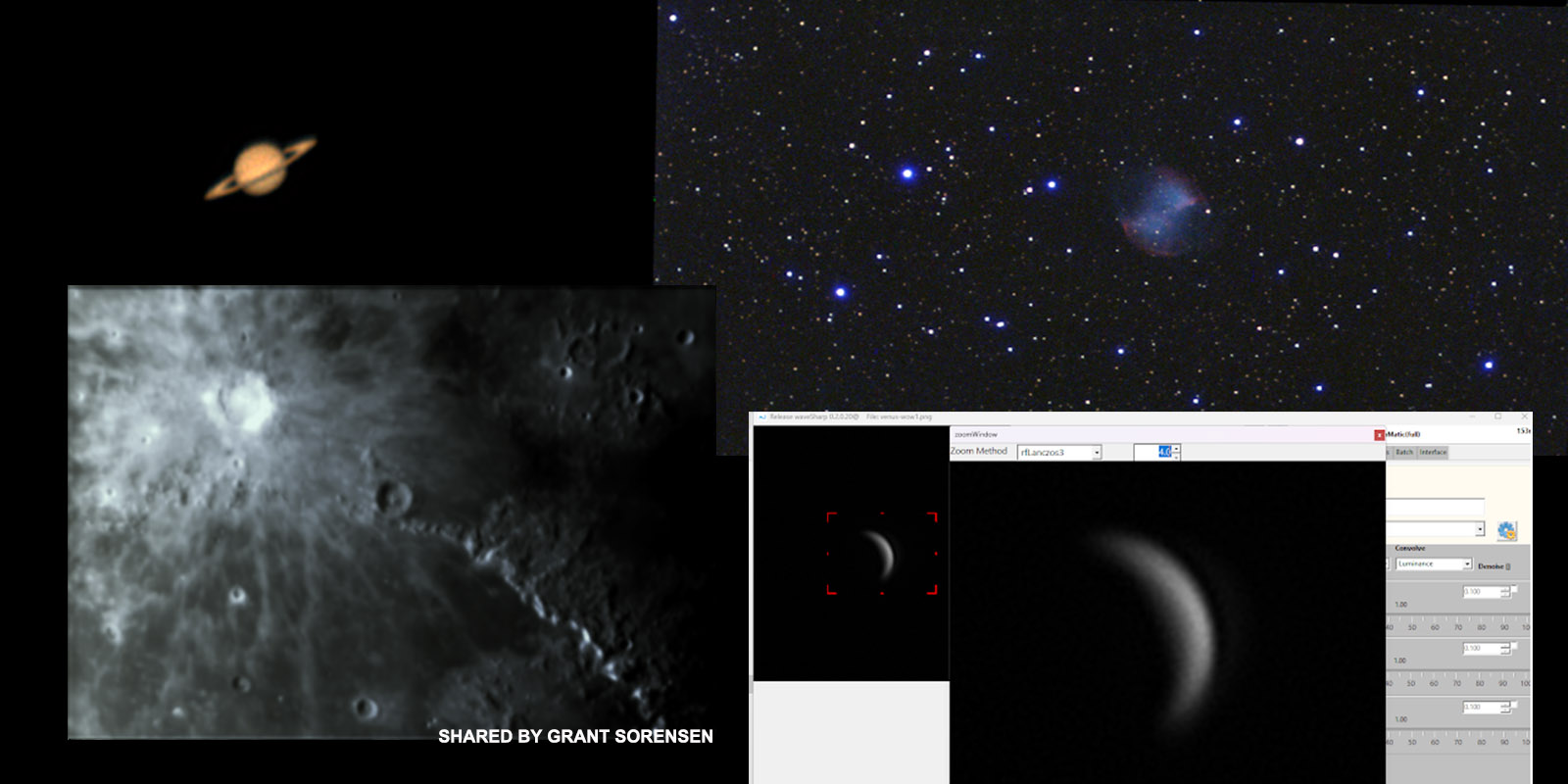
The figure above is shared by Grant Sorensen. He used the SV305C to shoot planets and nebulae in just a few days of precious sunny nights and shared his real feelings with us, and made serious comments and comparisons. Looking forward to your sharing.


